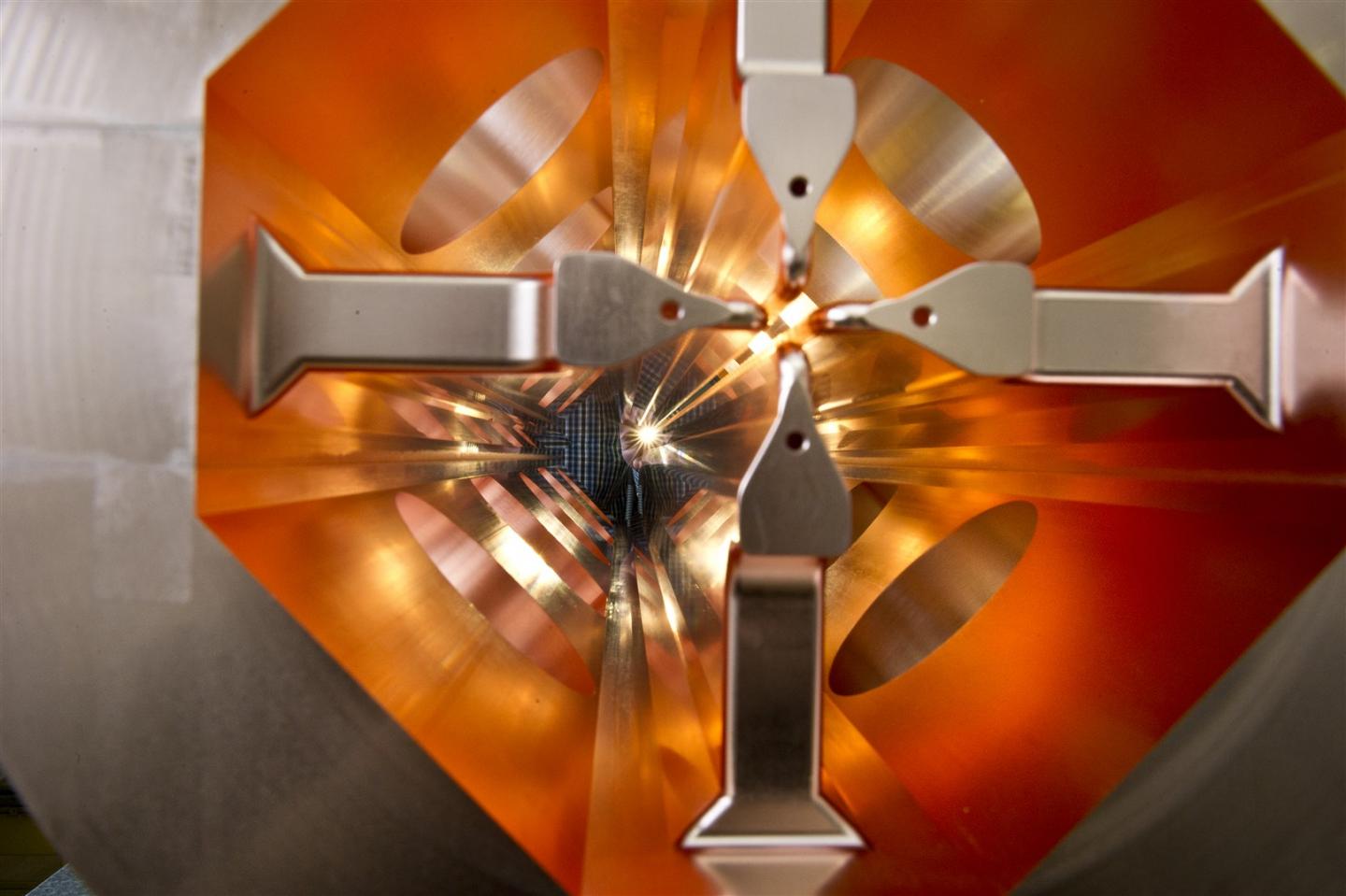World-class expertise in the design of technologies to accelerate, measure and control particle beams.
CERN's Know-How
- World’s largest group of accelerator physicists & engineers
- Decades of experience in the simulation, design & construction of accelerating structures
- Development of bespoke hardware and software for acceleration, diagnostics & beam control
Facts & Figures
- 11,245: number of times per second that each proton goes around the LHC
- 2,556: number of bunches per proton beam in the LHC
- 10+ hrs: lifetime of a proton beam during stable operation of the LHC
- 10+ billion: number of kilometres a proton beam will travel during stable operation of the LHC
Value Proposition
Read more about Particle Acceleration and Control here.
Key Competences
Compact accelerating structures
Decades of accumulated experience in the acceleration of subatomic particles. At CERN, our experts carry out R&D to improve existing acceleration technologies and explore new avenues for future higher performance, higher gradient devices.
Particle beam measurement
Continuous beam measurements are essential for reliable operation of the CERN accelerator complex. CERN personnel have accumulated decades of experience in the design, construction, operation and maintenance of instrumentation for the precise measurement of particle beams.
Design & management of beam control systems
Physicists and operators need to remotely control and monitor a vast array of beam instrumentation systems across the CERN accelerator complex, in order to improve operation, monitor the health of sub-systems, and diagnose faults.
Key Applications
Optical Beam Loss Monitors (oBLMs)
Developed in collaboration with University of Liverpool, oBLMs are radiation detectors that observe particle showers generated by beam losses. oBLMs are needed to reduce the risk of radiation problems, unwanted noise, and damage to equipment.
Beam Gas Ionization (BGI) Profile Monitor
For measuring the transverse emittance of a beam, a new instrument has been developed using Timepix3 hybrid pixel detectors. Timepix3 is part of the Medipix family of read-out chips for particle imaging and detection.
Picosecond Synchronisation
At CERN, particles circle the LHC over 11,000 times per second. This means components in the accelerator complex require minute timing accuracy and synchronisation. White Rabbit is a protocol based on industrial networking technology, developed at CERN for high-precision beam monitoring and control.

